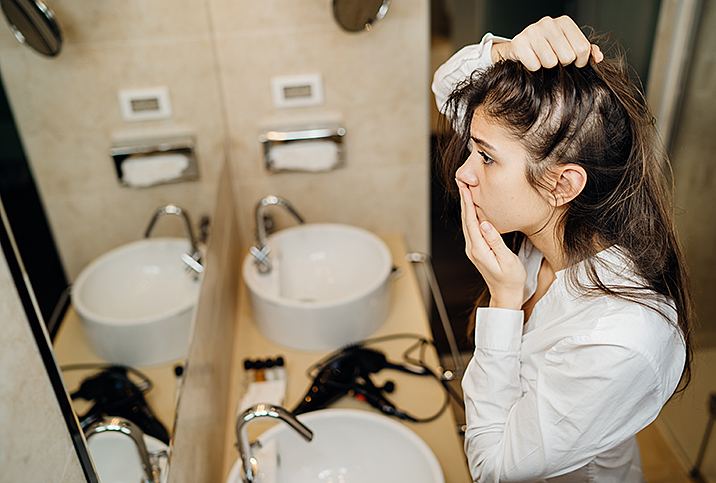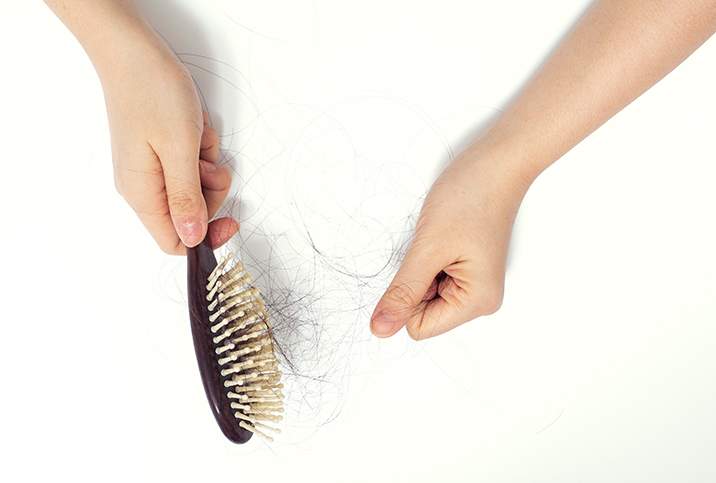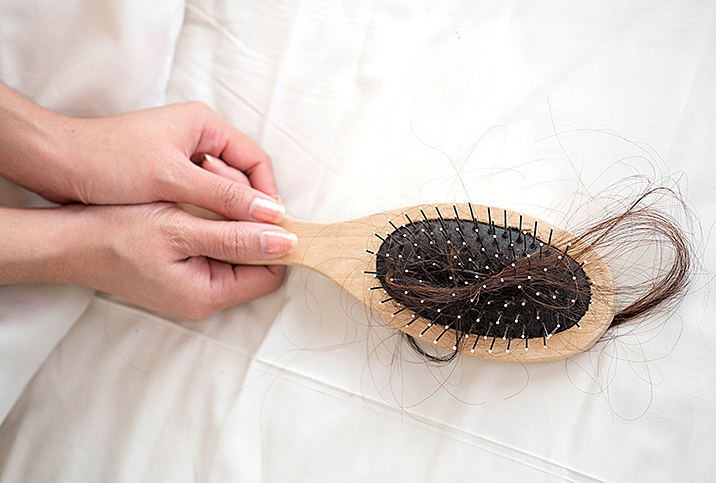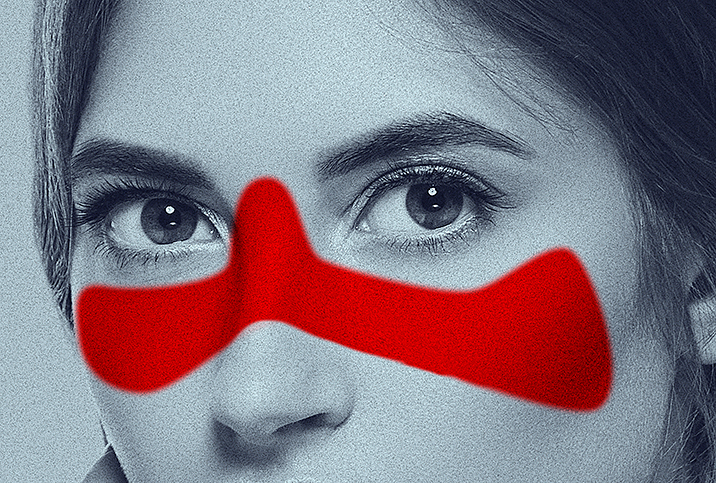What Living With Alopecia Areata Taught Me About Beauty

I shot straight up from the ground and ran at the fullest speed a 7-year-old could run. Duck! Duck! Goose! I was going to catch that duck! But something was wrong. Why was everyone pointing at me and laughing?
My wig was falling off. All my peers could see I was using it to hide my bald spots.
At 6 years old, after countless blood tests, I was diagnosed with alopecia areata, an autoimmune disease where the body's own immune system attacks healthy hair follicles, causing them to fall out. Alopecia areata affects 6.8 million people in the United States and 147 million worldwide, according to the National Alopecia Areata Foundation. I just happened to be one of those lucky people.
Wanting to be desired
The number of times I've heard people say, "It's just hair," is staggering. While they meant it to be an encouraging dose of perspective, it was not helpful to a 14-year-old girl who was becoming self-aware and desperately wanted her first kiss. Who was going to kiss the bald girl with the killer personality? No one. That's who.
As I struggled with my identity and self-worth, I began to ask questions. What makes someone sexy? What makes someone beautiful? I would sit close to the mirror and analyze my face, my eyes, my lips. I would look at my reflection and try to do things I thought were sexy. I wanted to be wanted, even if the only person who wanted me was me.
My adolescence was a never-ending cycle of losing and regrowing hair, always having new spots to hide with a big bow or extra-large scrunchie. I longed to be a "normal" girl, one who could wake up in the morning, throw her hair in a ponytail and bop out the door swinging her mane as she walked. But it wouldn't be until college that I had a full head of hair.
As I struggled with my identity and self-worth, I began to ask questions. What makes someone sexy?
After earning a degree in finance from the University of Illinois Champaign-Urbana, I traded it in for the world of burlesque. Through a series of chance encounters, the opportunity to do my first burlesque striptease came in 2003. All that time spent in the mirror as a confused teenager would finally come in handy: I used all of those practiced sexy poses and made the audience want me. Being wanted was a dream come true. There was no going back—I was hooked.
My career took off. I traveled around the world performing and teaching, and built an empire in Chicago as the owner of a burlesque school and a nightclub and an event producer with my husband. In the scene, I was known as "The Most Naked Woman," a tagline that not only alluded to my level of nudity on stage but also to my desire to be authentic, vulnerable and sincere. I felt passionate about bringing a healthy attitude toward sexuality to the stage. But my secret still plagued me, now more than ever. What I feared most, happened.
At the height of my career, or so I thought at the time, my hair started falling out again. As a woman, this was devastating. As a burlesque superstar, it was soul-crushing.
Chasing hair as a full-time job
Dermatologists, functional medicine doctors, acupuncturists, therapists. I tried everything. The causes of alopecia and autoimmune diseases are unknown.
"There are several factors that can trigger the symptoms of autoimmune disease, such as viruses, infections, and certain chemicals, poor nutrition, and physical or emotional stress," said Alyssa Abrahamson, a nutritional therapist and holistic wellness coach in New York City.
As I did my own research, I learned about gut health and its relationship to autoimmune diseases, and committed myself to healing my gut with an anti-inflammatory diet. This type of diet includes nourishing foods that are chock-full of antioxidants, nutrients and other immune-boosting compounds that reduce inflammation in the body, according to Abrahamson. In plain-speak, that meant eating nothing but whole foods that were free from grains, gluten, dairy and sugar. Let me tell you, it was a struggle for this Midwestern Italian girl.
Except for my husband and hairstylist, I told no one this was going on. My friends didn't know. My castmates had no idea. I got really good at hiding, and reluctantly began wearing wigs again. On the outside, I was "The Most Naked Woman," inspiring lust in audiences across the globe. But inside, I was broken.
Time to stop
In my private struggle and heartbreak, I realized that everything I had been teaching my students, I had to believe and live for myself. I stopped focusing on the external and started healing on the inside.
After four years of chasing hair and hiding my shame, it was time to face it all head-on. I had to break my silence and tell my friends and fans. I truly thought I was going to lose everything, but the risk was worth it.
In an online video I called "The Big Reveal," I shared my secret with the world. It was the most freeing experience of my life. Though I had spent years professionally taking off my clothing, the most naked I have ever felt was at the end of that video. Finally, I had made space to become who I was meant to be and I wanted the world to know it.
Through all of my pain and sadness over the loss of my hair, I learned the answer to my lifelong question, "What is beautiful?" Beauty is truth.
"Living within our truth and finding beauty within ourselves is an ongoing process," said Nicoletta Heidegger, a sex therapist and licensed marriage and family therapist in Los Angeles. "It is a muscle that we must flex. It is a war we must wage against greater culture and society and external messaging. We must gather our army, build our toolbox, find community, and continue practicing utilizing those tools when the voice of the inner critic dares to knock."
When we are in our truth and living it, we are brilliant beings with full access to our power. When we stop trying to fix the outside and start healing and loving the inside, this is when the real magic happens. I stopped chasing hair and began chasing myself. I am wanted. Wanted by me.


















